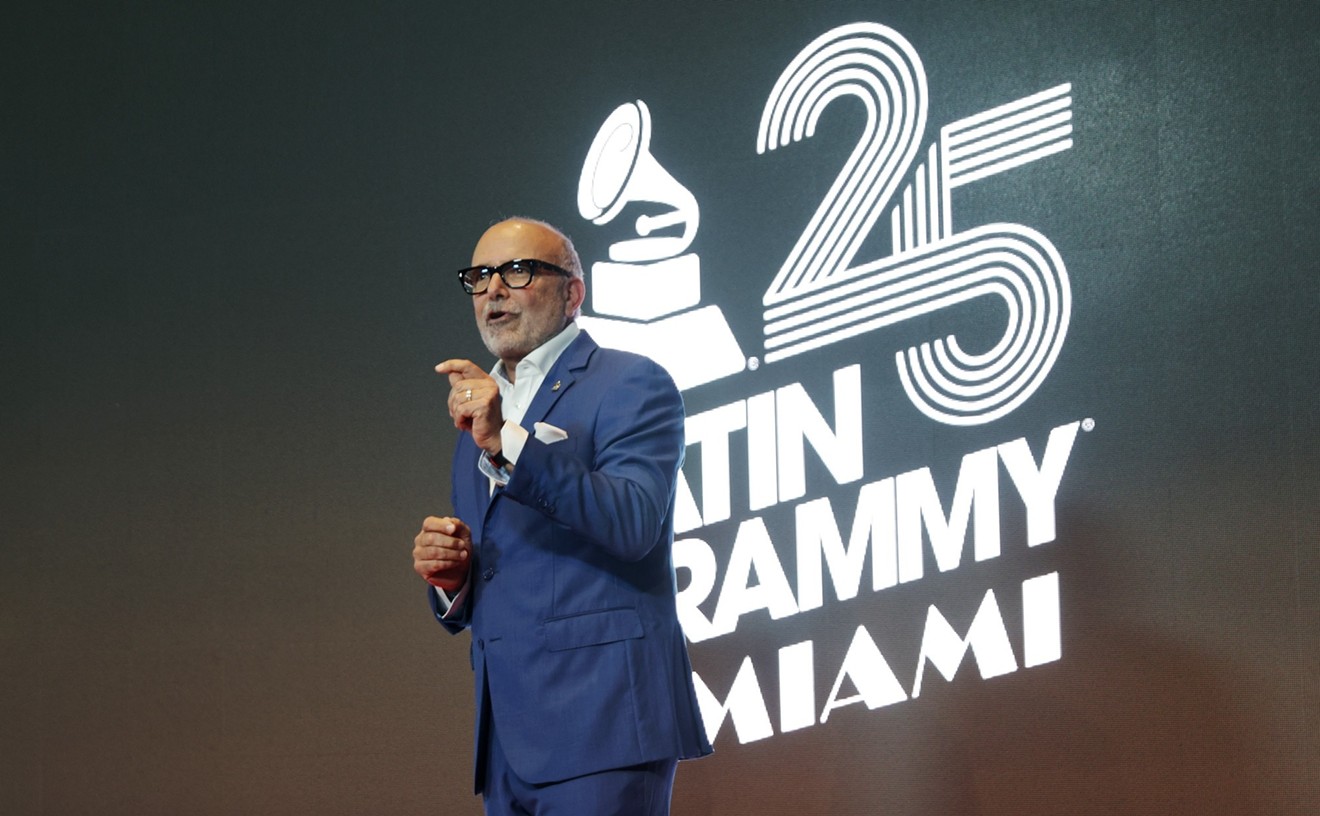A Thousand Leaves
(DGC)
Unlike any other album Sonic Youth has released in the last decade, A Thousand Leaves has met with surprisingly harsh criticism. What critics once saw as modernist lyrics, revelatory guitar tunings, and meaningful clouds of feedback have now been redefined as obtuse poetry, meandering solos, and squawking noise. The band's previous two albums, Experimental Jet Set, Trash and No Star (1994) and Washing Machine (1995) had already shown symptoms of the slow, gentle decline typical of aging punks. Yet the writers at the Village Voice, Spin, and other influential music rags didn't have the heart to lambast the very band they'd idolized throughout college in the '80s. It's worth asking what made Sonic Youth's core audience -- rock critics -- get off the bus at this stop. Is A Thousand Leaves really so bad, so much worse than their other recent stuff?
Actually, yes. It's the sound of four talented individuals -- Thurston Moore and Lee Ranaldo on guitars, Kim Gordon on bass, and Steve Shelley on drums -- floundering around in search of a context. By design or chance -- or a little of both -- their music has been rendered all but meaningless in the late '90s. The very genres that Sonic Youth helped create -- No Wave, riot grrrl, alternative -- are either obsolete or defined by faster, smarter bands. Unfortunately even the concise songcraft Sonic Youth developed during its Lollapalooza period is nowhere to be found on A Thousand Leaves.
The album's operative concept seems to be giving Moore, Ranaldo, and Gordon enough rope to hang themselves. Their music used to sound collaborative, but here it sounds skittish and underdeveloped, as if the songwriters had been working alone and in secret. The only unifying theme is Shelley's steady drum work. Remember that failed promotion of the late '70s when all four members of Kiss released solo albums at the same time? A Thousand Leaves sounds as if Moore, Gordon, and Ranaldo tossed their unfinished projects into the CD player and pressed the shuffle button.
Generally the songs overstay their welcome, lasting an average of about eight minutes each. They don't exit gracefully, either: Most just listlessly chase their own tails before passing out, exhausted. Ranaldo's obtuse "Karen Koltrane" goes on for more than nine minutes, and Moore's "Hits of Sunshine (for Allen Ginsberg)" clocks in at eleven minutes. Making the listening even more difficult is the lack of any unifying theme. Moore's fragile compositions concerning fatherhood ("Sing of child-love/Love is on," he sings on "Wildflower Soul") sit uneasily beside Ranaldo's static poesy ("Hoarfrost") and Gordon's pointless "feminist" parables (on "Female Mechanic Now on Duty," she delivers the couplet "Modern women cry/Modern women don't cry" amid a series of other non sequiturs). Once, the battle of wills between Sonic Youth's main members sounded resonant and rich. Here the musicians just sound indifferent. They seem unable to connect with each other and, in turn, with their increasingly intolerant audience.
-- Mark Rosen
Cheap Trick
Cheap Trick at Budokan: The Complete Concert
(Epic/Legacy)
It was originally intended to be simply a Japanese-only souvenir for the band's rabid following in the Land of the Rising Sun. But Cheap Trick's 1978 set At Budokan became both a greatest-hits album (for a band that didn't really have any hits in its American homeland) and a precedent-setting commercial success. Through word of mouth and major-market airplay, the album became so popular that import sales in the U.S. forced a stateside release. In the aftermath this oddball Chicago bar band, which previously got little more than critical praise for its three albums of metal-kissed power-pop, was everywhere. FM radio embraced the sardonic anti-teen-dream "Surrender" -- which flopped when first released as a single from the group's 1978 disc Heaven Tonight -- while AM turned the bouncy, goofy song "I Want You to Want Me" into a bona fide Top 10 hit.
Good as it was, At Budokan only hinted at what made Cheap Trick an atypical highlight among mid-'70s hard rockers. The band's landmark 1977 debut was overlooked completely in At Budokan's track listing, and some of the darker, heavier stuff from the next two albums -- In Color and Heaven Tonight -- was omitted in favor of arena-rock crowd pleasers ("Big Eyes") and Beatlesque pop tunes ("Come On, Come On"). As a snapshot At Budokan was fine, but it cut off a few heads.
The generously appended Cheap Trick at Budokan: The Complete Concert at last offers the big picture. Not only does it make a good album great, it turns the set into a career-defining document. Thanks mainly to Rick Nielsen's bent lyrics and encyclopedic knowledge of rock-guitar riffology, Cheap Trick smudged the line between heavy metal pomp and punk's crude energy.
With the addition of nine songs (released in 1994 on the poorly mastered and haphazardly compiled Budokan II), the complete At Budokan presents in ragged, raging glory the brilliance that defined Cheap Trick for a few short years. This was a band that could turn a typical crotch-rocker such as "Southern Girls" into a soaring gem, equal parts Motown and Beach Boys, thanks to the earnestly boyish vocals of Robin Zander. In the hands of Cheap Trick, songs about suicide ("Auf Wiedersehen"), drug-induced melancholia ("Downed"), and romantic depression ("Speak Now or Forever Hold Your Peace," a showcase for Tom Petersson's rumbling bass work) became idiosyncratic, slightly twisted, but wholly accessible radio-ready classics, built from the rock 'n' roll scraps left by the Who, the Yardbirds, and the Beatles.
Those dichotomies would eventually ground the band, as Nielsen succumbed to the worst sexist stereotypes of heavy metal that he once parodied ("She's Tight"). The music eventually devolved into art-pop cliche (1979's ambitious failure Dream Police) and sticky power-ballad goop ("The Flame"). Cheap Trick is still around, believe it or not, slogging through big clubs and small arenas, bolstered by hosannas in the underground press, name checks and covers from hipsters such as Steve Albini and Guided by Voices, and a small but feverishly loyal following that apparently can't hear too many versions of "I Want You to Want Me." But the show documented on the fleshed-out At Budokan -- from the breakneck opener "Hello There" to "Clock Strikes Ten" -- offers freeze-frame evidence that, for a while at least, Cheap Trick was among the greatest, screwiest rock 'n' roll bands on the planet. And now, 20 years after the fact, they've got the live album to prove it.
-- John Floyd
Widespread Panic
Light Fuse Get Away
(Capricorn)
It's been a long time coming, and it's good front to back. Widespread Panic, the veteran Southern rock band that's made a living on high-energy, on-stage improvisation, has finally captured its appeal on plastic. Culled from concerts throughout the group's 12-year history, Light Fuse Get Away is a must-have for fanatics and casual admirers alike.
The packaging alone is worth the price, designed to resemble a box of roman candles, the colorful double disc sports dragons, Chinese characters, fireworks warnings ("Caution Loud Report"), and lots of flames. It's fun, as is the music, which only backfires if you're looking for sensitivity. In the pothead utopia of WSP (as the band is called by its bootlegging fans), all is good and groovy.
This two-hours-plus set kicks off with "Porch," which basically sums up the band: "Havin' a good time/Watchin' the sun shine," goes the refrain, followed by lengthy solos from all six of the band's members. This approach is taken on most of the album's 19 songs, 4 of which break the ten-minute mark. "Love Tractor," led by John Hermann's fat organ, combines Southern rock and a reggae rhythm while John Bell lays down his gritty, Dave Matthews-esque vocals. "Space Wrangler" is also here in all its tripped-out glory: The band floats seamlessly through various tempo, rhythm, and volume changes before reaching a furious climax. It's followed by the road-tested shuffle "Travelin' Light," written by J.J. Cale.
The set's gem is "Pickin' Up the Pieces," featuring Branford Marsalis on saxophone. Too short at only five minutes, its jazzy melody, chantlike vocals, and soft electric piano stand out on an otherwise one-mood album. It's a perfect backdrop for Marsalis' sweet, shifty improvisation. Other standouts include "Papa Legba," a Talking Heads original given operatic gusto, and "Barstools & Dreamers," a multitiered, 11-minute jam. Light Fuse Get Away captures everything that Widespread Panic is (and isn't). This group of brilliant hippie-rockers play flawlessly, furiously, and, seemingly at times, forever.
-- Jonathan Lesser










